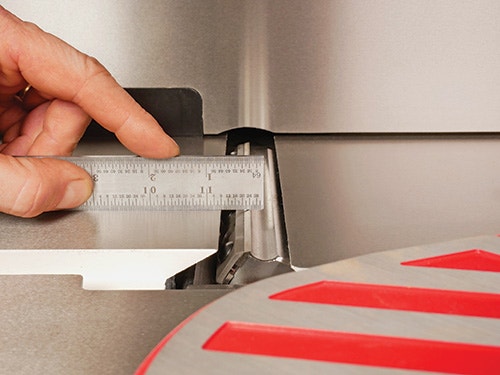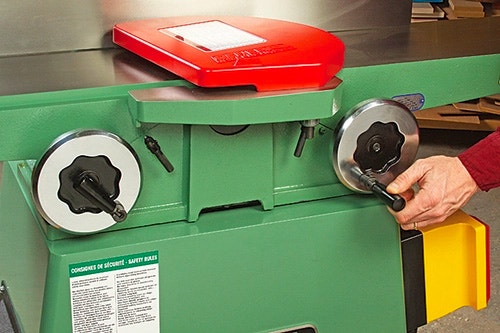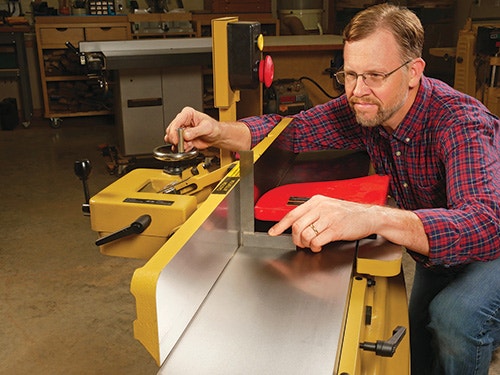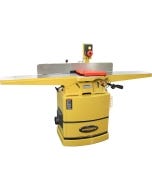How to Perform Shop Maintenance on Jointer Infeed and Outfeed Tables
Before you do any other maintenance, make sure your jointer's infeed and outfeed tables are parallel or the tool is virtually useless.
It may not be the most versatile machine in the shop, but without a jointer to put flat faces and straight edges on the lumber we build with, most of our other machines wouldn't be worth their weight in sawdust. We need true edges and faces on our stock that will ride solidly, smoothly and safely on our machine's tables and against their fences.
For the jointer to do its job correctly, the infeed and outfeed tables MUST be parallel to one another. If your jointed boards are coming out with either a convex (humped) or concave (hollowed) edge instead of straight, it's possible that your tables aren't truly parallel. To check this, use a straightedge with a dependably straight, preferably ground, edge that will make firm contact with the table's machined surfaces. Better still, I recommend using a long, high quality carpenter's level four or five feet long. Unlike a straightedge or square, the edge of a level will sit flat and not fall over.

After repositioning the fence so it's clear of the tables, set your straight edge see if there's a gap under the level near the cutterhead ends of both jointer tables. Check the gap using the thinnest leaf in a feeler gauge set (typically .0015 in. thick). If you don’t have feeler gauges, a piece of regular paper will work. If the feeler gauge reveals a gap, it's an indication that the tables are lower in the middle than the ends.

In either case, you can usually return the tables to parallel by adjusting the screws that press on the gibs in the jointer's dovetailed ways. The ways are the joints that connect each table to the base and allow it to slide up and down. If one or both tables have drooped, tighten the gib screws nearest to the outer ends of the table. If the tables sag in the middle, concentrate on the screws near the cutterhead end of each table (for more information on gib adjustments, consult your machine's manual).
Keep the inspiration coming!
Subscribe to our newsletter for more woodworking tips and tricks

